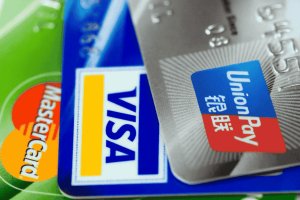Managing money has never been more convenient, thanks to the rise of online-only banks. These digital financial institutions offer banking services without the need for physical branches, appealing to tech-savvy individuals who prefer a seamless, app-based experience. However, traditional banks with physical branches still hold value, especially for those who prioritize face-to-face interactions and in-person banking services.
In this article, we’ll explore the advantages and disadvantages of online-only banks compared to traditional banks with physical branches. By understanding these differences, you can determine which type of bank best suits your financial needs.
What Are Online-Only Banks?
Online-only banks, also known as digital or neobanks, operate exclusively through digital platforms such as mobile apps and websites. They provide essential banking services, including:
- Savings and checking accounts
- Fund transfers
- Bill payments
- Mobile check deposits
- Investment and loan services (offered by some digital banks)
Since these banks do not have physical locations, all transactions and customer support are handled online or via phone/chat services.
What Are Traditional Banks?
Traditional banks operate through physical branch networks, where customers can visit for in-person banking services. They provide a wide range of financial products, such as:
- Savings and checking accounts
- Loans and mortgages
- Investment services
- Safety deposit boxes
- Face-to-face financial consultations
While most traditional banks now offer online and mobile banking, they still maintain physical locations for customer service and cash transactions.
Pros of Online-Only Banks

1. Lower Fees and Higher Interest Rates
Since online banks do not have the overhead costs of maintaining physical branches, they often pass those savings to customers through:
- Higher interest rates on savings accounts
- Lower or no monthly account maintenance fees
- Free fund transfers and bill payments
- Reduced foreign transaction fees
2. 24/7 Accessibility and Convenience
With an online bank, you can manage your finances anytime, anywhere. This is especially useful in regions where banking hours are limited. Mobile apps allow users to:
- Transfer money instantly
- Pay bills
- Deposit checks using mobile cameras
- Monitor transactions in real time
3. Fast and Easy Account Setup
Opening an online bank account is typically quicker than visiting a physical branch. Most digital banks allow you to complete the process within minutes using:
- A smartphone or computer
- A valid ID
- Basic personal details
4. Enhanced Security Features
Online banks employ cutting-edge security measures, including:
- Two-factor authentication (2FA)
- Biometric logins (fingerprint or face recognition)
- Real-time fraud alerts
- AI-powered fraud detection
Cons of Online-Only Banks
1. No Physical Locations
If you prefer face-to-face interactions for financial consultations, loan applications, or dispute resolution, online banks might not be ideal.
2. Limited Cash Deposits
Without physical branches or ATMs, depositing cash into an online-only account can be challenging. Some digital banks partner with retail stores or ATMs, but these services may come with fees.
3. Customer Service Challenges
While online banks offer chat and phone support, customers sometimes face:
- Delays in response times
- Automated replies instead of human assistance
- Difficulty resolving complex banking issues
4. Dependence on Internet and Technology
Without a stable internet connection, accessing your account can be problematic. Additionally, technical issues with apps or websites may temporarily limit banking services.
Pros of Traditional Banks

1. In-Person Services
For customers who value face-to-face interactions, traditional banks provide services like:
- Personalized financial advice
- Assistance with loans and mortgages
- Safe deposit boxes for valuable items
- Instant issue resolution for account-related concerns
2. Easier Cash Transactions
Physical branches and ATMs make it convenient to:
- Deposit and withdraw large sums of cash
- Exchange foreign currency
- Cash checks instantly
3. More Banking Products and Services
Traditional banks often provide a broader range of financial products, including:
- Business banking solutions
- Investment and wealth management services
- Special accounts for students, seniors, and businesses
4. Stronger Consumer Trust
With a long-standing reputation and government-backed deposit insurance, traditional banks are seen as more reliable by customers who prefer stability.
Cons of Traditional Banks
1. Higher Fees
Due to operational costs, traditional banks often charge:
- Monthly maintenance fees
- ATM withdrawal fees (especially for out-of-network transactions)
- Overdraft fees
- Higher foreign transaction charges
2. Lower Interest Rates on Savings
Compared to digital banks, traditional banks typically offer:
- Lower annual percentage yields (APY) on savings
- Minimum balance requirements to earn interest
3. Limited Banking Hours
Unlike online banks, traditional banks operate within fixed hours. If you need to visit a branch outside working hours, you may have to wait until the next business day.
4. Slower Account Setup
Opening an account at a physical bank may require:
- Scheduling an appointment
- Providing multiple documents
- Visiting a branch in person, which can be time-consuming
Which One Is Right for You?
Choosing between an online-only bank and a traditional bank depends on your financial habits and priorities. Here are a few questions to consider:
- Do you rely heavily on cash transactions? → A traditional bank may be better.
- Do you prefer higher savings interest rates and fewer fees? → Consider an online bank.
- Do you need financial advice or wealth management services? → Traditional banks offer more options.
- Do you value convenience and tech-friendly banking? → An online bank provides seamless digital services.
- Do you frequently travel and need global banking access? → Many online banks have lower foreign transaction fees.
The Future of Banking: A Hybrid Approach?

Many consumers are now combining both types of banks to enjoy the best of both worlds. A hybrid banking approach could include:
- Using a traditional bank for cash transactions and investment services
- Keeping an online bank for everyday spending, higher savings interest, and fee-free transactions
With the continued evolution of fintech, both online and traditional banks are innovating to meet customer demands. Whether you choose digital convenience or in-person services, understanding the pros and cons of each can help you make a smarter financial decision.
Conclusion
Both online-only banks and traditional banks have unique advantages and drawbacks. While online banks offer convenience, lower fees, and better interest rates, traditional banks provide personal service, cash access, and trust. The best banking choice depends on your financial needs, lifestyle, and comfort level with digital services. By carefully evaluating these factors, you can optimize your banking experience and make informed financial decisions.









